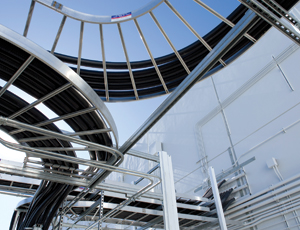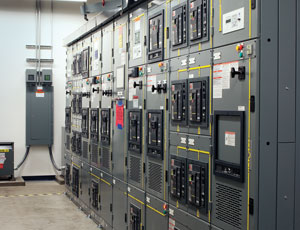The majority of the focus within the telecommunications sector is on building data centers, the power-hungry, industrial-strength warehouse buildings with sophisticated MEP systems that house racks of servers and network switching gear. While the sector was impacted by the economic meltdown last year, with its share of project cancellations and lingering funding problems, it is poised to recover quickly and continue strong for the foreseeable future, say contractors and industry analysts, who paint a picture of a dynamic, rapidly evolving construction market with high growth potential.


Think of it as the equivalent of building out the Interstate Highway System in the 1950s, except there is no end point. The demand for “bigger pipes” to handle everything from millions of Youtube videos to millions of cell phone calls to moving terabytes of business data across the globe is still in its infancy.
“Construction of new data centers has slowed in 2009, but demand has remained strong,” says Mark Thompson, national mission critical group leader for San Jose, Calif.-based DPR Construction. “Data centers that require developer or bank financing have slowed or stopped their projects, while owners who are financing their own facilities are moving forward.”
Rick Morgan, senior vice president and director of mission critical facilities for Holder Construction Co., Atlanta, agrees. The slowdown has been “across the board” for all sizes of data centers, says Morgan. Holder has seen five projects stopped since fall 2008 that were already in the construction phase. “But we still see a steady market going forward,” Thompson says.
Competition for top-tier data centers is generally limited to the firms listed on the ENR Top 20 telecommunications list. It is a relatively small club of contractors that work nationally with business units dedicated to serving the unique needs of the sector. Owners tend to be sophisticated and demanding. Some regional contractors are in the market based on existing relationships with a corporate owner, for example, or a local hospital system that needs a new data center. But in general, the barriers to entry are high, and it is a national-level playing field. Peak performance on the part of contractors is a given, and owners are continuously pressing for improvements in performance.
Evolving Owner Demands
Owners have become even more demanding in the post-recession environment. The key drivers are improving the energy efficiency of their data centers and improving the effectiveness of their capital expenditures, sources agree.
Owners are “very selective” in picking their contractors, says Holder’s Morgan. “It’s not just your corporate experience. They want to know the specific individual you’re proposing on site and whether they have the right experience.” He adds that competition for projects has intensified. Before the recession there might be four to five contenders. Now he sees 10 or more on an average procurement.
Because these projects are so expensive—in the range of $1,200 to $1,500 per sq ft—owners are “spending more time analyzing the design. Then they want it built as quickly as possible,” says Ben Kaplan, vice president of Hawthorne, N.Y.-based Turner Logistics. “It’s a very innovative climate in terms of process and product.” Turner is working on several initiatives to streamline procurement and delivery of these project types, he says.
Owners such as Digital Realty Trust, a large developer of leased space data centers, are “really strong in managing the vendor supply chain,” says DPR’s Thompson. “They tend to use the same firms over and over and it becomes more of a manufacturing mindset than a one-off delivery.”
As a result, DRT and other owners are “pushing us to a higher level” in terms of process,” he says. “They want a more integrated approach.” DPR has completed more than 22 facilities for DRT, including a Leadership in Energy and Environmental Design (LEED) Platinum-certified, 24,000-sq-ft facility in Comstock, Calif.
In another twist, computer hardware suppliers are attempting to assume a larger role in the overall delivery process. “The big hardware guys are selling to owners directly as a sort of integrated vendor,” says Thompson, citing IBM...

Post a comment to this article
Report Abusive Comment